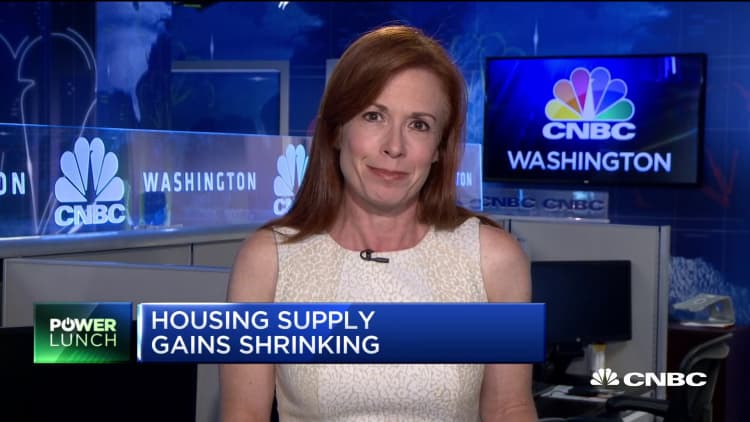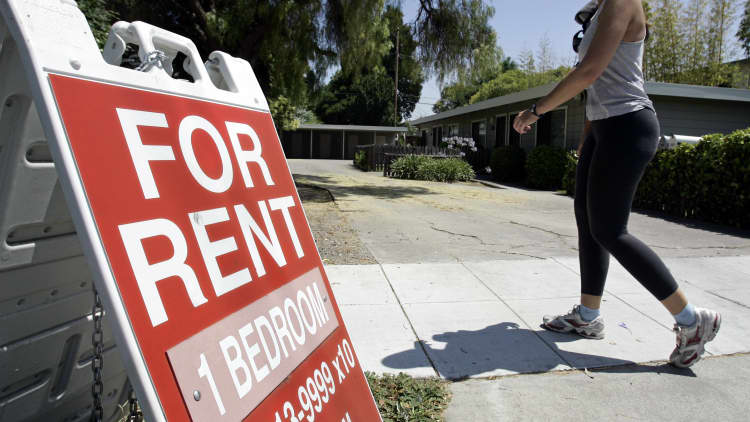Competition in the housing market finally began to cool this year, as listings multiplied and price gains moderated. Bidding wars became less frequent and spring sales perked up a bit. Well, forget that. The heat is on yet again.
The housing shortage that fueled competition and resulted in sky-high price gains throughout 2017 and the first half of 2018 is on the horizon yet again. Supply is soon expected to drop and potentially hit a new low, according to realtor.com, after increasing in the second half of last year.
The number of for-sale listings was up 2.8% annually in June, but that was down from May's 2.9% gain. Inventory gains began to slow this year from 6.4% growth in January to 5.8% in February. Gains continued to slow throughout the spring and supply is now expected to flatten over the next three months and could hit its first decline in October of this year, according to realtor.com

"It was only 18 months ago that the number of homes for sale hit its lowest level in recorded history and sparked the fiercest competition among buyers we've ever seen. If the trend we're seeing continues, overall inventory could near record lows by early next year," said Danielle Hale, chief economist at realtor.com. "So far there's been a lackluster response to low mortgage rates, but if they do spark fresh buyer interest later in the year, U.S. inventory could set new record lows this winter."
Part of the issue is that fewer owners are now listing their homes for sale, and there are several reasons why.
"It's likely a combination of rate-lock, recently decreased consumer confidence and older generations choosing to age in place," added Hale.
Mortgage rates are still pretty low, but so many homeowners refinanced their loans when rates were even lower that moving would mean paying more for the same mortgage, on top of paying more for a move-up home. Even those sellers who want to downsize would be moving into a pricier market.
Home price gains had been shrinking, but the gains increased again in June for the first time in 14 months, according to CoreLogic.
"Interest rates on fixed-rate mortgages fell by nearly one percentage point between November 2018 and this May," said Frank Nothaft, chief economist at CoreLogic. "This has been a shot-in-the-arm for home sales. Sales gained momentum in May and annual home-price growth accelerated for the first time since March 2018."

All real estate is local of course, and inventory is leanest in some of the nation's most affordable markets. In the 46 major markets tracked by Redfin, a real estate brokerage and analytics company, inventory fell in June annually for the first time since last September. Cities like Memphis, Tennessee, Pittsburgh and Oklahoma City saw double-digit declines in the supply of homes for sale, while much pricier markets like San Jose, California, Seattle and Boston were still seeing inventory gains.
"Lower interest rates are bringing buyers back, but without enough homes for sale to meet demand, we expect to see more bidding wars, which will push prices up this summer," said Redfin's chief economist, Daryl Fairweather. "We expect small, inland markets where a typical home is still affordable for a middle-class family to heat up the most."


